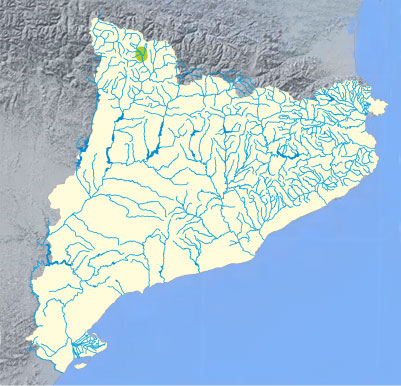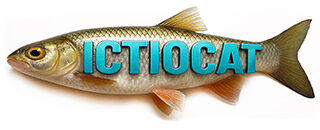Carpa
Cyprinus carpio

La carpa és un peix de gran mida. Pot assolir longituds de fins a 90 cm i viure més de vint anys. El cos és molt robust i està recobert d’escates grosses. La boca està envoltada per dos parells de barbetes. L’aleta dorsal és llarga amb el primer radi espinós i serrat. Té una coloració daurada més fosca al dors.
La carpa és originària d’Europa oriental i oest d’Àsia. Està introduïda a Catalunya des de fa almenys tres segles i és present a pràcticament totes les conques.
Habita en rius de curs lent, llacs i embassaments, preferentment on el fons és de llim o fang. Pot viure en aigües una mica contaminades. Es reprodueix de maig a juliol. La carpa és omnívora, s’alimenta d’invertebrats, matèria vegetal, detrits orgànics i fins i tot petits peixos.
Genera un fort impacte ecològic sobre l’ecosistema, ja que el seu comportament d’alimentació tendeix a eliminar la vegetació aquàtica i enterbolir l’aigua, afavorint l’eutrofització.
Distribució

Tenca
Tinca tinca

Pot arribar a mides de prop de 50 cm. Té un cos molt robust amb escates petites i recobert d’una abundant secreció mucosa. La boca presenta dues barbetes sensorials. Els ulls són de color vermell-taronja. Són de coloració verdosa, més fosca al dors, amb la part ventral groguenca.
La tenca es distribueix de forma natural per Europa i Àsia, però és introduïda a Catalunya. Actualment és molt rara, i només forma poblacions estables en algunes basses i petits embassaments.
Té preferència per aigües estancades o rius de corrent molt lent amb abundant vegetació aquàtica. Pot sobreviure en aigües amb baixes concentracions d’oxigen. Té una alimentació omnívora (invertebrats, plantes, algues i detritus).
Distribució

